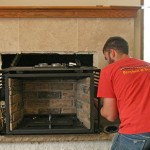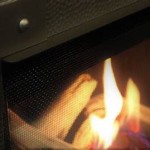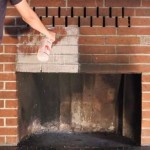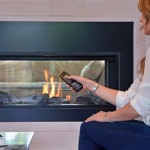Best Fireplace Inserts: Wood-Burning Models for Efficient Heating
Fireplace inserts offer a practical and aesthetically pleasing solution for homeowners seeking to improve the efficiency and heating capacity of an existing masonry fireplace. Specifically, wood-burning fireplace inserts provide the ambiance of a traditional wood fire while minimizing heat loss and maximizing fuel efficiency compared to open fireplaces. Selecting the best wood-burning fireplace insert requires careful consideration of factors such as heating capacity, efficiency ratings, firebox size, emissions, and safety features.
An open fireplace, while visually appealing, is notoriously inefficient. A significant portion of the heat generated escapes up the chimney, often drawing warm air from the rest of the house to fuel the draft. A wood-burning fireplace insert addresses this issue by creating a sealed combustion chamber that radiates heat into the room, significantly reducing heat loss and enhancing overall heating performance. These inserts are designed to fit within the existing firebox, connecting to the chimney via a flue liner to ensure proper venting of combustion gases.
Understanding Key Features When Choosing a Wood-Burning Fireplace Insert
Several key features differentiate wood-burning fireplace inserts and contribute to their performance and suitability for different heating needs. Understanding these features is crucial for making an informed decision when selecting a model for a particular home.
Heating Capacity (BTU Output): The heating capacity of a wood-burning fireplace insert is measured in British Thermal Units (BTUs). This rating indicates the amount of heat the insert can generate per hour. To determine the appropriate BTU output for a specific space, consider the square footage of the area to be heated, the home's insulation levels, and the climate. Inserts with higher BTU outputs are suitable for larger areas or homes with poor insulation. It is generally recommended to choose an insert that is appropriately sized for the space to avoid overheating or inefficient operation.
Efficiency Rating: The efficiency rating of a wood-burning fireplace insert indicates how effectively it converts the energy in wood into usable heat. Higher efficiency ratings translate to lower fuel consumption and reduced emissions. Efficiency is typically expressed as a percentage. Look for inserts with an efficiency rating of 75% or higher for optimal performance and cost savings. The Environmental Protection Agency (EPA) mandates specific emissions standards for wood-burning appliances, and inserts that meet these standards generally have higher efficiency ratings.
Firebox Size and Log Capacity: The firebox size determines the maximum log length the insert can accommodate and the overall fuel capacity. A larger firebox allows for longer burn times and reduces the frequency of reloading. Consider the desired burn time and the size of the wood available when selecting an insert with an appropriate firebox size. Check the manufacturer's specifications for the recommended log length and firebox volume.
Materials and Construction: The materials used in the construction of a wood-burning fireplace insert significantly impact its durability, heat retention, and lifespan. Common materials include cast iron and steel. Cast iron inserts tend to retain heat longer, providing more consistent warmth, while steel inserts heat up more quickly. The quality of the welding, the thickness of the metal, and the overall construction of the insert are important factors to consider when assessing its durability.
Emissions Standards: As mentioned earlier, the EPA sets emissions standards for wood-burning appliances to reduce air pollution. Look for inserts that are EPA-certified and meet current emissions regulations. EPA-certified inserts are designed to burn wood more cleanly and efficiently, minimizing the release of harmful pollutants into the atmosphere. Choosing an EPA-certified insert contributes to a healthier environment and may also qualify for tax credits or rebates in some areas.
Safety Features: Safety is paramount when operating a wood-burning fireplace insert. Look for features such as a tightly sealed door with a secure latch, a durable glass viewing window designed to withstand high temperatures, and a built-in air wash system to keep the glass clean. Regular cleaning and maintenance are essential for safe operation. Ensure that the insert is installed according to the manufacturer's instructions and local building codes.
Blower Fan (Optional): Many wood-burning fireplace inserts are equipped with a blower fan that circulates heated air into the room more effectively. A blower fan can significantly enhance the insert's heating performance, particularly in larger spaces. Some models offer variable speed blower fans, allowing for adjustable airflow and temperature control. While a blower fan can increase the efficiency and distribution of heat, it also requires electricity to operate.
Aesthetics: While efficiency and performance are primary considerations, the aesthetic appeal of the wood-burning fireplace insert is also important. Inserts are available in a variety of styles, finishes, and designs to complement the existing décor of the home. Consider the overall style of the room and choose an insert that enhances its visual appeal. Options include traditional, contemporary, and rustic designs. Some inserts also offer decorative features such as ornate castings or custom finishes.
Installation Considerations and Chimney Requirements
Proper installation is critical for the safe and efficient operation of a wood-burning fireplace insert. Installation typically involves connecting the insert to the existing chimney using a stainless steel flue liner. The flue liner must be properly sized and installed to ensure adequate draft and prevent the escape of combustion gases.
Professional Installation: It is highly recommended to hire a qualified professional to install a wood-burning fireplace insert. A professional installer has the experience and expertise to ensure that the insert is installed correctly and safely, in compliance with local building codes and manufacturer's instructions. Improper installation can lead to safety hazards, such as carbon monoxide poisoning or chimney fires.
Chimney Inspection and Cleaning: Before installing a wood-burning fireplace insert, it is essential to have the chimney inspected and cleaned by a qualified chimney sweep. A chimney inspection can identify any structural problems or obstructions that could affect the performance of the insert. Cleaning the chimney removes creosote buildup, which is a flammable substance that can increase the risk of a chimney fire. Regular chimney cleaning is an important part of maintaining the safe operation of a wood-burning appliance.
Flue Liner Installation: A stainless steel flue liner is typically required to connect the wood-burning fireplace insert to the chimney. The flue liner provides a dedicated pathway for the combustion gases to vent safely and efficiently. The size and type of flue liner must be compatible with the specific insert and the existing chimney. A professional installer can determine the appropriate flue liner for the installation.
Clearances and Ventilation: Ensure that the wood-burning fireplace insert is installed with adequate clearances to combustible materials, such as walls, floors, and furniture. Manufacturer's instructions specify the minimum clearances required for safe operation. Proper ventilation is also important to ensure that the room has an adequate supply of fresh air for combustion. In some cases, it may be necessary to install an outside air kit to provide a dedicated source of fresh air for the insert.
Fuel Selection and Maintenance for Wood-Burning Fireplace Inserts
The type of wood used in a wood-burning fireplace insert significantly affects its performance, efficiency, and emissions. Proper fuel selection and regular maintenance are essential for optimal operation and longevity.
Seasoned Wood: Burn only seasoned wood in a wood-burning fireplace insert. Seasoned wood has been air-dried for at least six months to reduce its moisture content. Burning green or wet wood produces more smoke, creosote, and air pollution, and reduces the efficiency of the insert. Seasoned wood burns hotter and cleaner, providing more heat with less fuel. Look for wood that is dry, split, and stacked for proper air circulation.
Hardwoods vs. Softwoods: Hardwoods, such as oak, maple, and ash, are denser and burn longer than softwoods, such as pine and fir. Hardwoods generally provide more heat and require less frequent reloading. Softwoods tend to burn faster and produce more smoke. While softwoods can be used in a wood-burning fireplace insert, they are best used for kindling or starting fires. Hardwoods are the preferred fuel source for sustained heating.
Creosote Buildup: Creosote is a flammable substance that accumulates in the chimney as a byproduct of burning wood. Regular chimney cleaning is essential to remove creosote buildup and prevent chimney fires. The frequency of chimney cleaning depends on the type of wood burned, the burning habits, and the design of the fireplace insert. It is generally recommended to have the chimney inspected and cleaned at least once a year, or more frequently if creosote buildup is excessive.
Ash Removal: Regular ash removal is important for maintaining the proper operation of a wood-burning fireplace insert. Excess ash can reduce airflow and hinder combustion. Remove ash when it accumulates to a depth of several inches. Use a metal shovel and container to remove the ash and dispose of it properly. Do not use a vacuum cleaner to remove ash, as it can damage the vacuum motor and spread fine particles into the air.
Cleaning the Glass: The glass viewing window of a wood-burning fireplace insert can become dirty over time due to smoke and creosote buildup. Clean the glass regularly with a specialized glass cleaner designed for fireplace inserts. Avoid using abrasive cleaners, as they can scratch the glass. A built-in air wash system can help to keep the glass clean by directing a stream of air across the surface.
Inspections and Maintenance: Regularly inspect the wood-burning fireplace insert for any signs of damage or wear. Check the door seal, the flue liner, and the chimney connections for any leaks or cracks. Repair any issues promptly to ensure safe and efficient operation. Follow the manufacturer's recommendations for maintenance and service. Schedule regular professional inspections to identify and address any potential problems.
By carefully considering these factors, homeowners can select the best wood-burning fireplace insert to meet their individual heating needs, enhance the ambiance of their home, and enjoy the benefits of efficient and sustainable wood heating.

The Best Wood Burning Fireplace Inserts Or Stoves Ecohome

Best Wood Fireplace Inserts Fireplaces Direct Learning Center

Napoleon Epi3 Wood Fireplace Insert Inserts By Rockford Chimney

Fireplace Insert Guide Fireplaces Direct Learning Center

Best Fireplace Inserts In 2024

Fireplace Inserts Gas Wood Pellet Electric Best Fire Hearth Patio

Comparing Fireplace Inserts What S Best For You Forge Flame

Large Flush Wood Rectangular Nexgen Fyre Made In America Fireplace Xtrordinair

Lopi Premium Wood Fireplace Inserts Custom Hearth Fireplaces And Stoves

The Best Wood Burning Fireplace Inserts Or Stoves Ecohome
Related Posts








